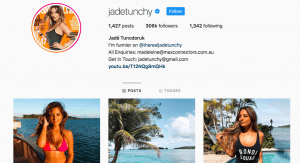(07/08/2018)
In this week’s class, we explored the concept of new media and exactly why is it labelled new? I’ve never really thought about this critically, and through describing this particular notion, I find myself constantly shifting my explanation of it by calling it digital media, online media, modern media and so forth, but these are limitations I am subconsciously placing on the term.
To simply call it digital media would be a limited description as “to posit that the technology is the defining dimension of the media overlooks the ways in which users shape them.” (Siapera, 2012) and to address it purely as online media insinuates that the element of connectivity is the core purpose of media; “and sure, connectivity is a crucial element, but focusing on it overlooks the other ways in which we relate to the media.” (Siapera, 2012). Words such as ‘innovative’ and ‘dynamic’ are constantly used to describe new media. A concept so fluid can’t purely be labelled as digital media or online media exclusively. It doesn’t necessarily mean these terms are incorrect because new media definitely exists due to technological advances and fosters a sense of connectivity amongst consumers but new media is constantly evolving and advancing to tailor to the needs of its’ consumers. It can’t simply be described with one adverb; that would be too finite and rigid for such a multifaceted concept.
“The failure to specify what may qualify as a new medium, actually allow us to include attributes such as digital, online and others as well without limiting or prioritizing any single one.” – Eugenia Siapera
This idea of connectivity really stuck out to me this week. In ‘Understanding New Media’, Siapera outlines that “connectivity is certainly a crucial attribute of the media under study: the ability to link to distant, and sometimes in, others, one or many at the same time, has had wide consequences.” (Siapera, 2012)
I was able to greatly relate to that considering the majority of my relatives are all around the world. The ability to contact them with speed and ease whenever I want to, makes me feel as though they’re right here with me, despite them being thousands and thousands of kilometres away. Social media platforms and the new age of media have created the ability for all to foster a sense of connectivity to those who aren’t physically here. Hinton and Hjorth describe it to be “fleeting moments of connection that take place through flashes of light, across deep-sea cables and microwave pulses that bounce invisibly between orbiting satellites.” (Hinton and Hjorth, 2013)
In addition to this, they discuss the rise of Web 2.0 and what it really means for consumers. The rise of new media introduces an array of platforms for individuals to express themselves in any way they wanted to. The constant flow of evolution invites free speech on social media platforms, inclusive of Instagram. Anyone with a profile instantly becomes a creator.
“Where boundaries between personal and professional identities no longer apply.” – Hinton and Hjorth
“Underlying this concept is an array of questions about the changing nature of what is public and what is private, and where work ends and life begins, as social media infiltrates every facet of everyday life.” – Hinton and Hjorth
This idea of free speech and no limitations as to what can be said and presented to the public gets users drunk off freedom, BUT, as users with this infinite amount of power of freedom, are we really controlling or are we simply being controlled? The ability to post and say whatever on social media platforms means that we are also subjected to scrutiny and constant monitoring from our peers and Instagram itself? Hinton and Hjorth state that in participating in new media innovations such as Instagram, invites “hundreds or even thousands of potentially critical eyes watching every entry. A faulty fact will be challenged, a lie will be uncovered, plagiarism will be discovered. Cyberspace is a truth serum.” (Hinton and Hjorth, 2013)
Due to this, users of Instagram are now seeking privacy in the public sphere by having a secondary account on social media platforms that are private. These secondary accounts are usually where people are truly able to express themselves and post photos they actually want to. Which intrigues me because isn’t that the point of having a profile on Instagram, to begin with? This isn’t the case anymore as it’s considered to be the norm for someone to have a primary profile that is public to all; only presenting polished images and having a secondary account for close friends and family to view.
Take this as an example, Jade Tunchdoruk is a social media influencer with a following of 306K. Her profile consists of ‘candid’ shots of her and her friends on the foreground of gorgeous international destinations.
If you have a look in her bio, it provides a link to her secondary account entitled @therealjadetunchy and these are the difference in content and aesthetic:
These are one of the many social media influencers and content creators that possess a secondary account where they are able to showcase their genuine self.
References
- Siapera, E. (2012). Understanding new media. SAGE Publications Ltd.
- Hinton, S. and Hjorth, L. (2013). Understanding social media. London: SAGE Publications Ltd.






